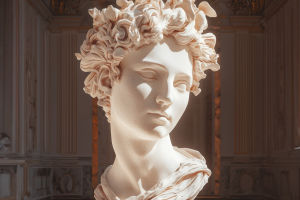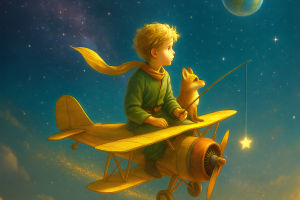Lykkers, have you ever stood before a canvas humming with thousands of tiny dots, feeling an inexplicable pull towards its hidden depths? This is Aboriginal art—Australia’s ancient yet living masterpiece, a vibrant language whispered across 60,000 years.
Forget dusty relics; this is the world's oldest continuous artistic tradition, pulsing with life today. Each symbol, is a direct line to Country, to Dreaming stories, and to profound cultural knowledge passed down through countless generations. Ready to decode its secrets?
More Than Aesthetic
What truly sets this art apart is its inseparable link to cultural identity and spiritual connection. It's not created solely for beauty; it's a visual archive, a ceremonial expression, and a powerful assertion of ancestral ties. Every mark carries weight, encoding knowledge of creation ancestors, sacred sites, water sources, and intricate kinship systems. It transforms landscape into narrative.
Dots That Speak
The iconic dot painting technique, pioneered powerfully in the 1970s at Papunya Tula, a remote settlement in Australia's Central Desert, is far more than pattern. Dots meticulously applied with sticks or fine brushes create shimmering fields, concealing and revealing sacred knowledge appropriate for public viewing.
Artists like Clifford Possum Tjapaltjarri used dots to map Songlines – epic journeys of creation ancestors across the land. The density, color, and direction of dots tell specific parts of the story.
Bark's Timeless Tales
From the tropical north, bark paintings offer a window into profound mythology. Artists meticulously prepare sheets of stringybark eucalyptus, curing them over fire. Using natural ochre pigments – rich reds from iron oxide, deep yellows from clay, stark whites from pipeclay, and blacks from charcoal – they depict Mimi spirits, ancestral beings, and intricate cross-hatching (rarrk) unique to clans like the Yolngu.
The rarrk itself signifies clan identity and ancestral power.
Weaving Country's Gifts
In regions like Arnhem Land and the Tiwi Islands, fiber art transforms native plants into stunning objects. Women expertly harvest pandanus leaves, soaking and stripping them, then dyeing them with roots, berries, and ash. Intricate coiled baskets, sturdy dilly bags for gathering, and ceremonial dance mats emerge, their patterns encoding knowledge of place, totems, and social roles.
The rhythmic process itself connects weavers deeply to Country.
Wood's Sacred Forms
Wood carving manifests ancestral presence in tangible form. Artists select specific hardwoods, often using traditional stone tools alongside modern ones. In Central Australia, punu (wood carvings) depict animals like the goanna or witchetty grub, embodying ancestral beings.
In the Torres Strait, elaborate dance masks (dhari) and totemic poles are central to ceremonial life, painted with clan patterns using natural pigments.
Symbols: A Visual Code
Aboriginal art employs a sophisticated symbolic lexicon. A simple U-shape represents a person sitting, circles indicate waterholes or camp sites, concentric circles often signify sacred sites, wavy lines depict watercourses or snakes, and animal tracks map journeys. These symbols aren't arbitrary; they are a standardized visual language understood across vast distances, encoding complex information about landscape and lore.
Country: The Heartbeat
The concept of Country is paramount. It encompasses not just the physical landscape – rivers, mountains, deserts – but also the ancestral beings who formed it, the knowledge systems it holds, and the deep spiritual responsibility to care for it. Art is born from this connection. Ochre is literally the earth; designs map specific places within the artist's traditional custodianship. Painting is an act of belonging and reverence.
Modern Masters Emerge
Contemporary Aboriginal artists brilliantly bridge millennia. Emily Kame Kngwarreye exploded onto the scene in her 80s, translating her Alhalkere Dreaming into vast, mesmerizing fields of color and line. Urban artists like Brook Andrew incorporate neon, photography, and installation, confronting history and identity.
Textile collectives like Tiwi Design translate ancient patterns onto modern fabrics, ensuring cultural continuity and economic empowerment.
Your Journey Starts
Lykkers, the magic of Australian Aboriginal art asks for more than a glance; it invites deep looking. Visit reputable galleries specializing in Indigenous art. Seek out the artist's name, their language group, and the story behind the work. Support ethical sources that ensure fair returns to artists and communities.
Let the dots draw you in, trace the lines of the land, feel the pulse of ancient stories echoing in vibrant modern expressions. What hidden narrative will you discover? Share your encounters!


